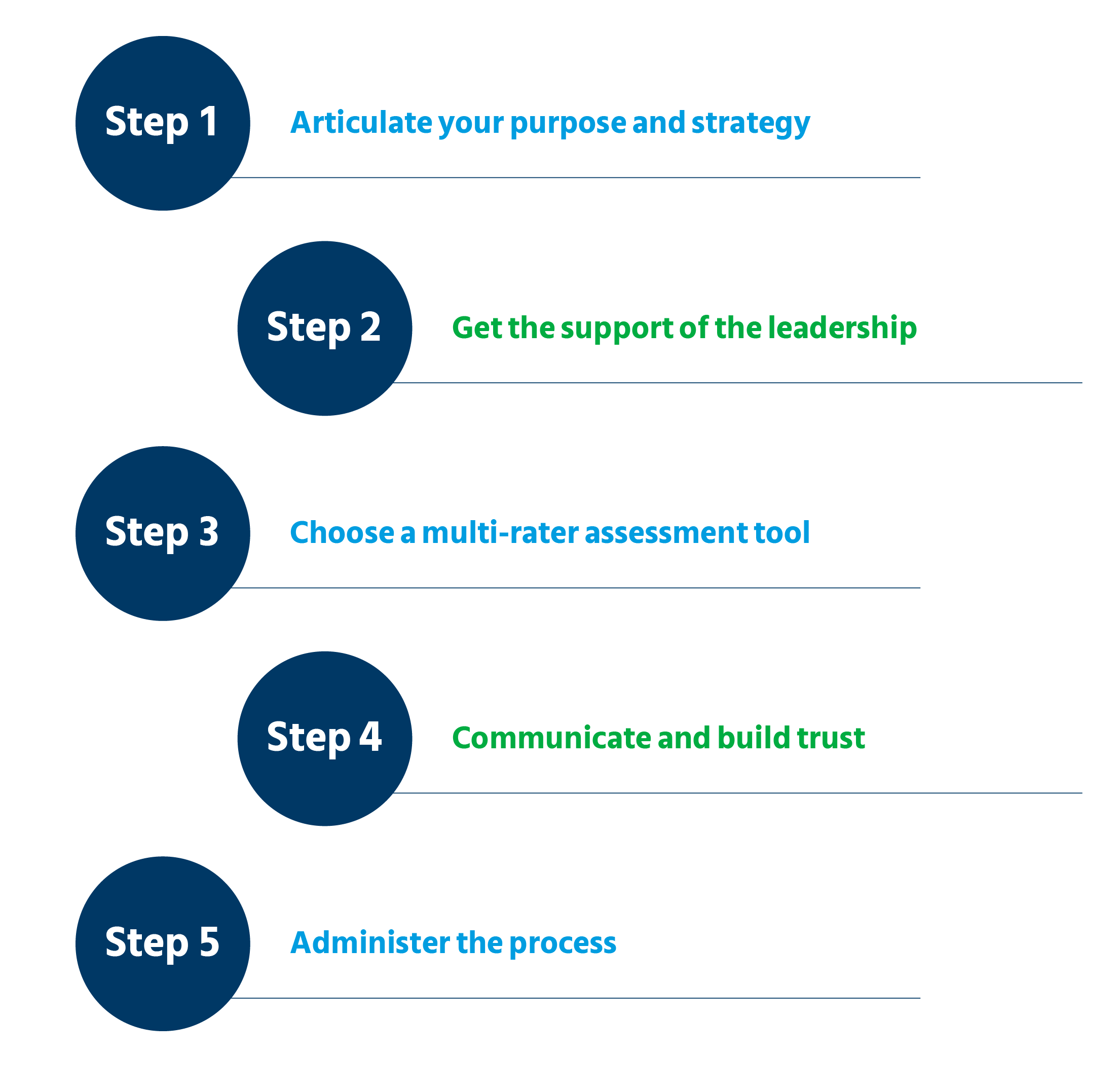Everyone must participate for a multi-rater feedback process to work. Every employee requires feedback from multiple others, resulting in everyone in the company giving feedback to multiple people. For this reason, management must set clear expectations, be accountable for the successful completion of the feedback, and help to create a climate of consistency and fairness for all stakeholders.
The don’ts: mistakes to avoid for a successful multi-rater assessment
There are several mistakes that organizations make when rolling out a multi-rater survey. If not checked, these mistakes can lead to disastrous consequences, even failure of the feedback process.
Mistake 1: An overload of questions
It is a common mistake to roll out unnecessarily long surveys. Even though you may have the best automation technology to save the answers and allow raters to pick the questionnaire up later, too many questions can still be overwhelming.
Ideally, anyone asked to provide multi-rater feedback should be able to complete the request in about 15 minutes time. That ensures meaningful responses and honest opinions.
Mistake 2: Asking raters to respond to irrelevant questions
Parameters like personal goals, a fair salary hike, etc., should not be shared with everyone. Raters need not have an opinion in this regard and should not be asked to answer questions on these topics.
It is best to stick to elements like communication, teamwork, professional skills, problem-solving abilities, quality of life at an organization, etc.
Mistake 3: Lack of transparency with regards to confidentiality
In some organizations, everyone knows that the feedback provided will be shared. On the other hand, other companies do not reveal the identity of the participants. Whatever your situation, ensure that your expectations have been communicated with both managers and employees. This gives multi-raters the opportunity to phrase their feedback in the best possible manner.
Mistake 4: Not establishing guidelines for selecting raters
It is key to get holistic but relevant perspectives when rolling out multi-rater feedback. Therefore, it always helps when you choose the raters based on a standard set of guidelines.
Mistake 5: Not choosing a user-friendly interface
It is critical to choose a multi-rater feedback tool that is easy to use and review. If raters struggle with too many controls and saving their answers, the completion rate of the survey is more susceptible to go down.









 Behavioral Competencies
Behavioral Competencies Cognitive Competencies
Cognitive Competencies Coding Competencies
Coding Competencies Domain Competencies
Domain Competencies









































Would you like to comment?